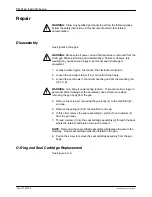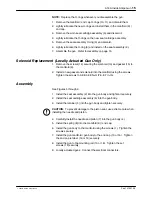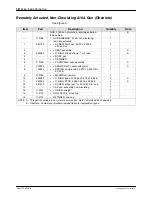
A16A Inside Stripe Gun
3
Part 107907-06
E
2020 Nordson Corporation
The National Spray Equipment Manufacturers Association has created a
wallet card that you should carry when you are operating high-pressure
spray equipment. These cards are supplied with your equipment. The
following is the text of this card:
WARNING:
Any injury caused by high pressure liquid can be serious. If
you are injured or even suspect an injury:
S
Go to an emergency room immediately.
S
Tell the doctor that you suspect an injection injury.
S
Show him this card
S
Tell him what kind of material you were spraying
MEDICAL ALERT—AIRLESS SPRAY WOUNDS: NOTE TO PHYSICIAN
Injection in the skin is a serious traumatic injury. It is important to treat the
injury surgically as soon as possible. Do not delay treatment to research
toxicity. Toxicity is a concern with some exotic coatings injected directly into
the bloodstream.
Consultation with a plastic surgeon or a reconstructive hand surgeon may
be advisable.
The seriousness of the wound depends on where the injury is on the body,
whether the substance hit something on its way in and deflected causing
more damage, and many other variables including skin microflora residing
in the paint or gun which are blasted into the wound. If the injected paint
contains acrylic latex and titanium dioxide that damage the tissue’s
resistance to infection, bacterial growth will flourish. The treatment that
doctors recommend for an injection injury to the hand includes immediate
decompression of the closed vascular compartments of the hand to release
the underlying tissue distended by the injected paint, judicious wound
debridement, and immediate antibiotic treatment.
Fire Safety
To avoid a fire or explosion, follow these instructions.
S
Ground all conductive equipment. Use only grounded air and fluid
hoses. Check equipment and workpiece grounding devices regularly.
Resistance to ground must not exceed one megohm.
S
Shut down all equipment immediately if you notice static sparking or
arcing. Do not restart the equipment until the cause has been identified
and corrected.
S
Do not smoke, weld, grind, or use open flames where flammable
materials are being used or stored.
S
Do not heat materials to temperatures above those recommended by
the manufacturer. Make sure heat monitoring and limiting devices are
working properly.








































